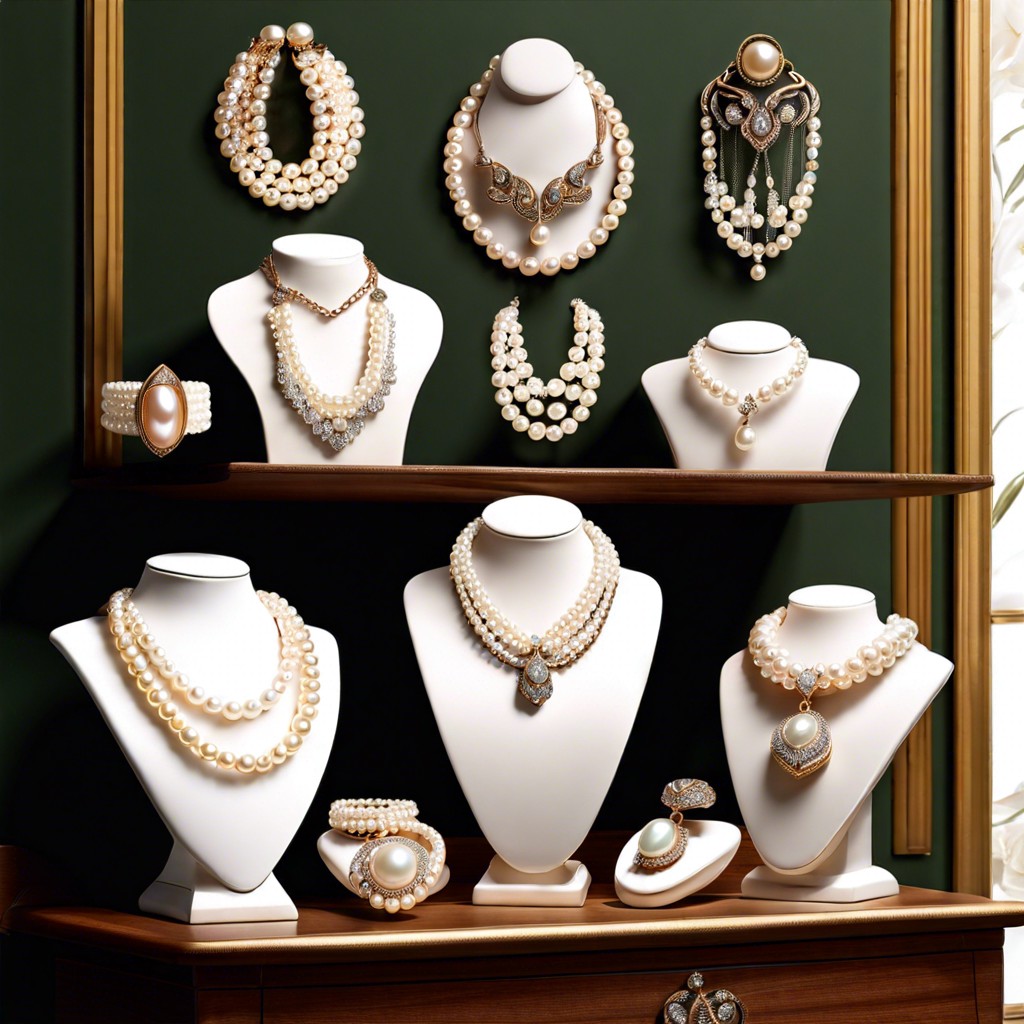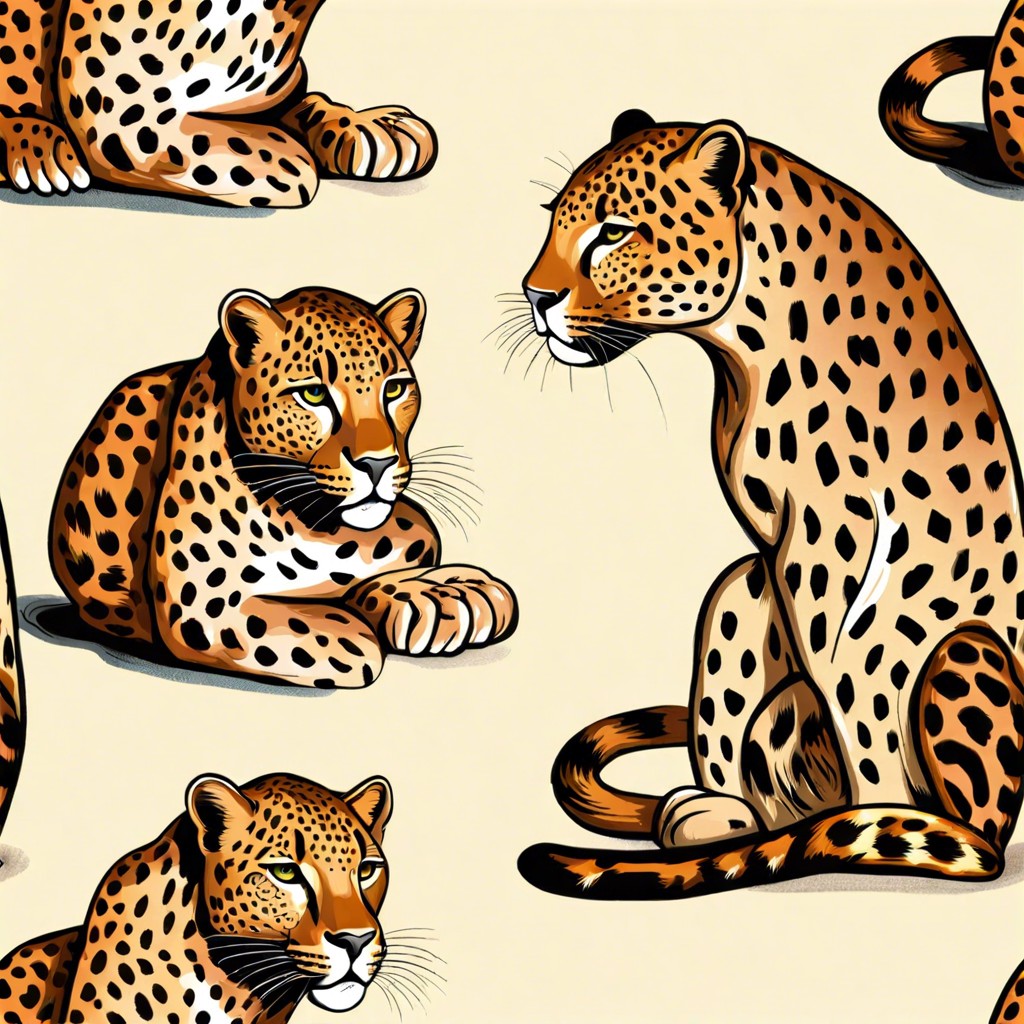Last updated on
Discover the allure and significance of vintage pearl jewelry and how it adds classic elegance to any collection.
Key takeaways:
- Vintage pearls hold stories of human history and natural majesty.
- Assess vintage pearl quality based on luster, surface, shape, color, and size.
- Pearls have cultural significance throughout different eras, reflecting societal norms.
- Renowned vintage pearl pieces include La Peregrina and the Hope Pearl.
- Market trends for vintage pearls are driven by sustainability, provenance, and fashion cyclical nature.
Vintage Pearl Origins and History

Pearls have bedazzled wearers for millennia, with the earliest records dating back to ancient Chinese civilizations over 4,000 years ago. Coveted for their natural shimmer, pearls were a symbol of wealth and status across various cultures. Divers would bravely plunge into ocean depths, wrestling with the mysteries of the sea to retrieve these oceanic gems.
The creation of a pearl is a serendipitous event, born from an irritant entering an oyster’s sanctuary, prompting the creature to swaddle the intruder in layers of nacre. Over years, these layers accumulate to form the lustrous pearl. Natural pearls of yesteryear, each different from the next, were far rarer before the advent of pearl farming in the early 20th century.
The vintage pearls that stir up auction houses and ignite collectors’ passions today are often those with storied pasts—handed down through royal lineages or once adorned by silver screen luminaries. These pearls, beyond their physical allure, carry tales of human history, love, and sometimes even intrigue.
As we delve further into pearls’ past, it’s not simply their creation or former owners that fascinate us but also the pearl industry’s evolution. From the Gulf of Mannar’s ancient pearl beds to the bustling pearl trade in Victorian England, vintage pearls encapsulate a patchwork of human endeavor and natural majesty.
Assessing Vintage Pearl Quality

Pearls are judged on several key characteristics: luster, surface, shape, color, and size. Luster refers to the shine and reflects quality – think of the pearl as a tiny, round mirror. The brighter and clearer your reflection, the higher its luster and value.
Surface blemishes can occur naturally. While totally smooth pearls are prized, small imperfections add character and don’t always detract from value. Shape also plays a pivotal role. Round pearls command top dollar, but off-round varieties have their charm.
Color is another factor. Traditional whites and creams are classic, yet pearls in pink, silver, or black hues can be show-stoppers. Size matters, but bigger isn’t always better. Think of pearls like cupcakes – a perfectly formed mini can be just as delightful as a larger one.
When assessing, bring pearls into natural light. Roll them gently – uniformity is a plus, but subtle variances can indicate authenticity. Always handle with care; oils and dirt from your hands can affect their quality over time. Keep these points in mind, and you’ll choose a winner every time.
Cultural Significance of Pearls in Different Eras

Pearls have held a mirror to shifting ideals of beauty and wealth through time. In ancient Rome, they signified status, so much that Julius Caesar passed laws restricting their wear to the ruling classes. The Renaissance saw these gems as heaven-sent, a belief reflected in the opulent pearl-laden portraits of the period.
Victorian England associated pearls with mourning, embedding them in somber jewelry pieces to express grief and remembrance. Across the pond, during America’s Gilded Age, the gem became a hallmark of affluence in the necklines of high society.
The Roaring Twenties brought about a more casual elegance, pearls draped around flapper necks in long, swinging strands. Meanwhile, post-war mid-20th century tastes saw pearls symbolize femininity and grace, epitomized by icons like Audrey Hepburn and Jackie Kennedy, setting a trend for understated luxury.
Pearls, as historical and societal markers, continue to fascinate, reflecting social norms, values, and fashions of their times.
Renowned Vintage Pearl Pieces and Collections

Pearls have graced the collections of royalty and celebrities alike. The La Peregrina, an illustrious pearl that passed through Spanish kings, Napoleon III, and Elizabeth Taylor, boasts a storied past as dramatic as its owners. Another showstopper, the Hope Pearl, one of the largest saltwater pearls, remains a legend at the British Museum of Natural History.
The Cartier-designed necklace for Maharaja of Patiala features a cascade of pearls and diamonds, illuminating the opulence of Indian royalty. Meanwhile, Jackie Kennedy’s triple-strand pearl necklace became a symbol of chic simplicity in the 1960s. These pieces reflect the allure of pearls in high society.
Not confined to personal treasures, vintage pearls adorn religious artifacts too. For instance, strands of pearls often feature in Russian icons, exemplifying spirituality and purity. Every piece tells a tale, revealing the time-specific values and aesthetics.
Collectively, renowned pearls provide a shimmering window into the epochs they represent, from renaissance reverence to contemporary charm. They not only captivate collectors but also continue to inspire today’s jewelry designers with their enduring beauty.
Market Trends for Vintage Pearls

Pearl jewelry exudes a timeless allure that resonates with collectors and fashion enthusiasts alike. In recent years, the appeal of vintage pearls has surged, reflecting a broader trend where tastes shift from modern glitz to classic elegance.
One influencing factor in this trend is sustainability. As consumers become more environmentally conscious, they’re drawn to the enduring value of pre-owned pearls. This shift not only embraces eco-friendliness but also celebrates pearls’ durable beauty.
Another aspect driving interest is the stories behind vintage pearls. Pieces with a rich provenance or celebrity connection often fetch higher prices at auction. Collectors relish the opportunity to own a slice of history.
The fashion industry’s cyclical nature also feeds into these market trends. Pearls frequently reappear on designer runways, sparking renewed interest in their vintage counterparts. What’s old is new again, and pearls fit this narrative perfectly.
However, the market is selective. The demand is highest for pearls that are well-preserved and boast a high luster. Such specimens are likely to appreciate in value, making them not just ornamental investments but also financial ones.
Supply constraints also play a role. Natural pearls, in particular, are scarce. Since vintage versions are no longer produced, they carry an intrinsic rarity that elevates their status and market value.
Investors and enthusiasts alike are wise to observe these dynamics. Staying attuned to these trends is key for anyone interested in the enchanting world of vintage pearls.




